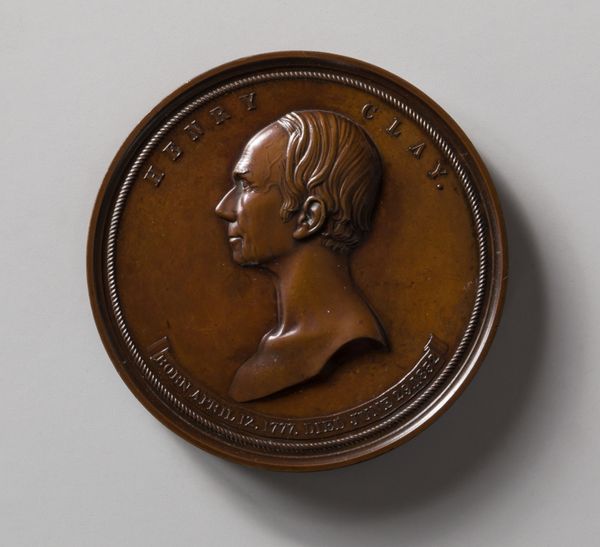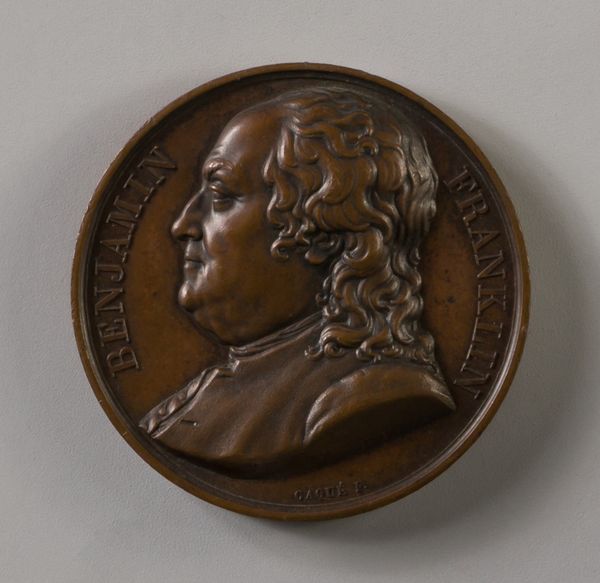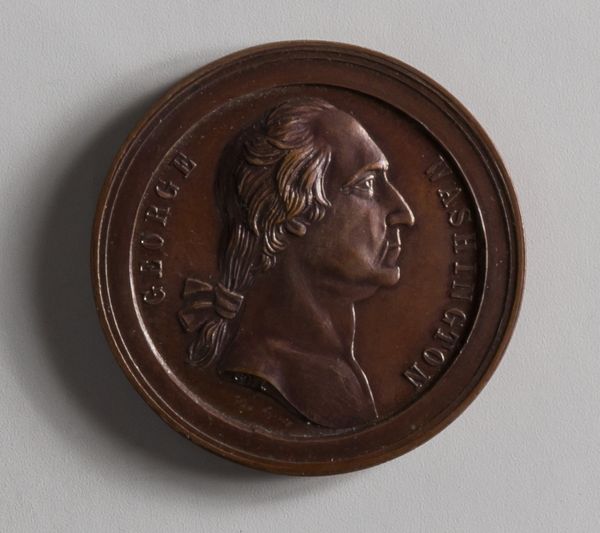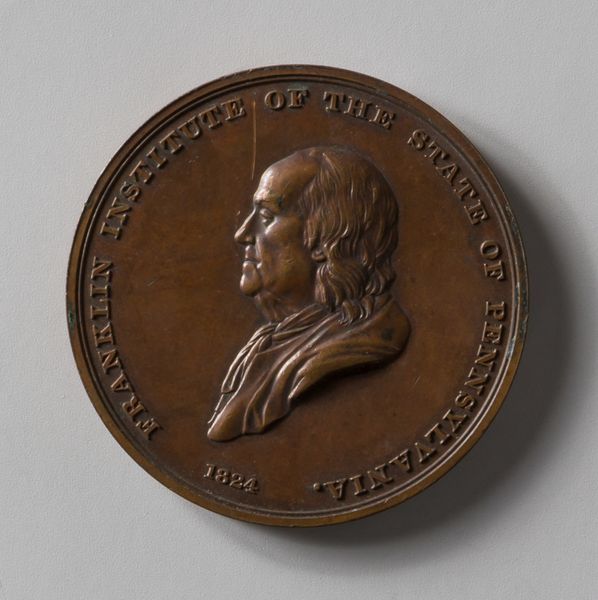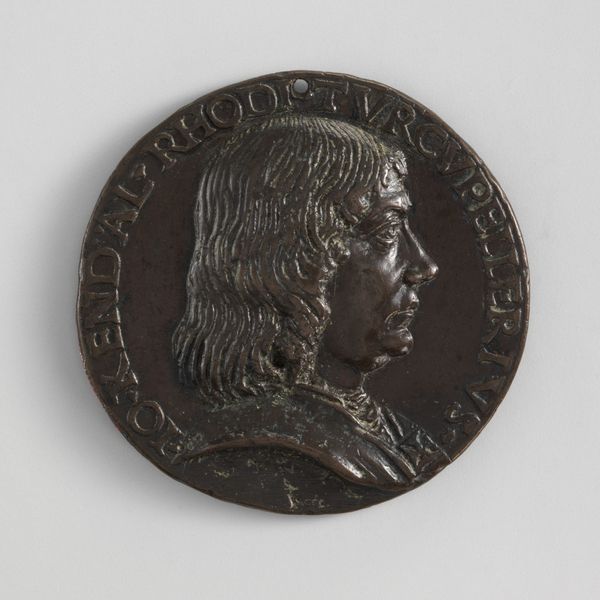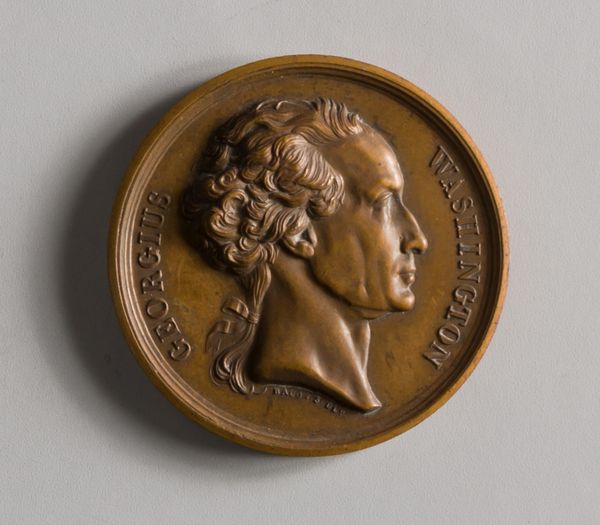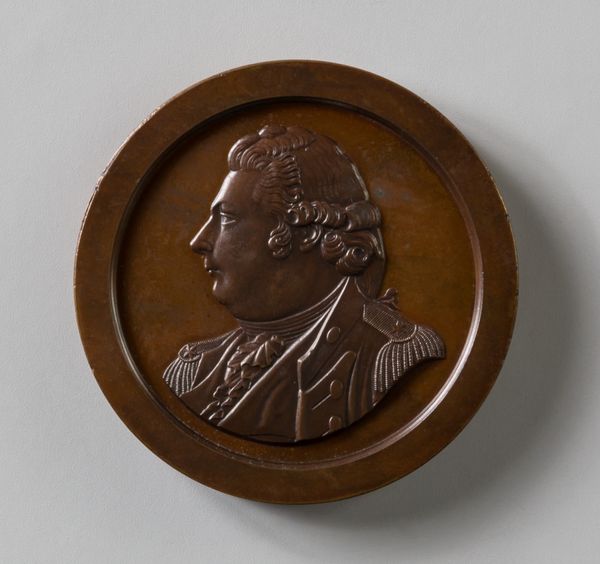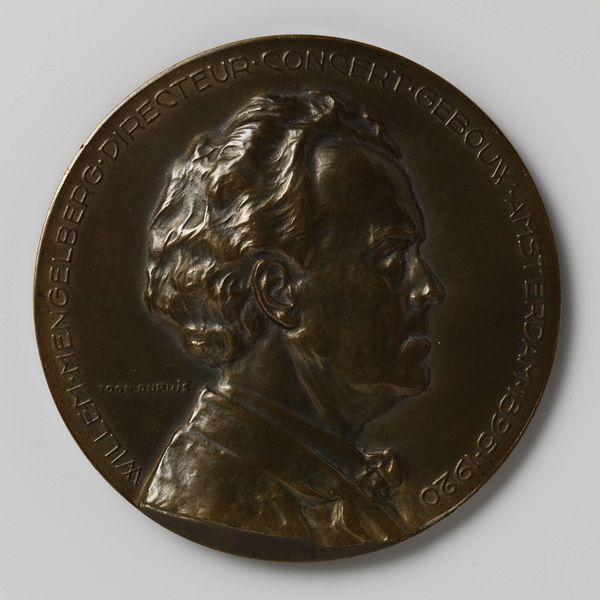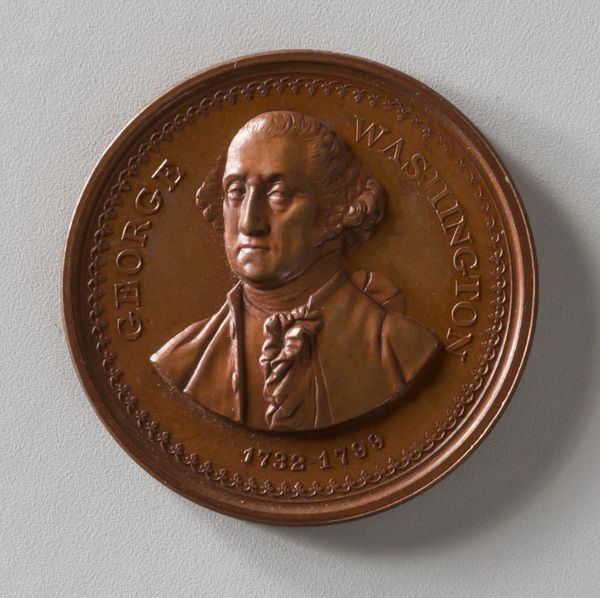
metal, bronze, sculpture
#
portrait
#
neoclacissism
#
metal
#
sculpture
#
bronze
#
sculptural image
#
close-up shot
#
sculpture
#
france
#
profile
#
statue
Dimensions: Diam. 1 5/8 in. (4.1 cm)
Copyright: Public Domain
Editor: So this bronze "Medallion" of Benjamin Franklin, dating from 1819, by Godel & Co, is an interesting piece! The cool thing is, its sculptural quality captures this really classical, almost Roman vibe. How might we interpret its historical place, given that Franklin was such a key figure in the American Revolution? Curator: A fascinating point! Consider the context. Neoclassicism was a dominant style, drawing explicit inspiration from classical antiquity. It served as a visual language of power and order. This medallion, though depicting an American revolutionary, frames him within this established European aesthetic. How does this positioning affect your perception of Franklin's legacy and impact? Editor: Hmm, that makes me think. It’s like they are trying to legitimize or monumentalize Franklin within a traditional framework, even though he stood for revolution and breaking from tradition. Does this suggest a certain cultural aspiration, maybe on the part of Americans or even Europeans? Curator: Precisely! Medals, as a form, often served propagandistic purposes. Here, Franklin is immortalized. Think about the selection of bronze—a durable, historical material, immediately adding a sense of permanence and importance. What might be the difference if it were plaster, for instance? Editor: Right, plaster would be far less grand or serious, wouldn’t it? Using bronze connects him to figures of Roman emperors. Okay, so I’m thinking that the image almost suggests a cultural borrowing, using established European artistic language to elevate an American figure and, potentially, the American project itself on the world stage. Curator: Precisely. We are seeing a calculated deployment of visual vocabulary to shape a very specific narrative. And it's worth pondering: who was this medallion meant for, and what message did its commissioners wish to convey? Editor: So cool to see art as part of these much bigger stories, not just something pretty to look at. Thanks! Curator: Absolutely, and analyzing the language of form reveals those layered meanings. Fascinating!
Comments
No comments
Be the first to comment and join the conversation on the ultimate creative platform.
